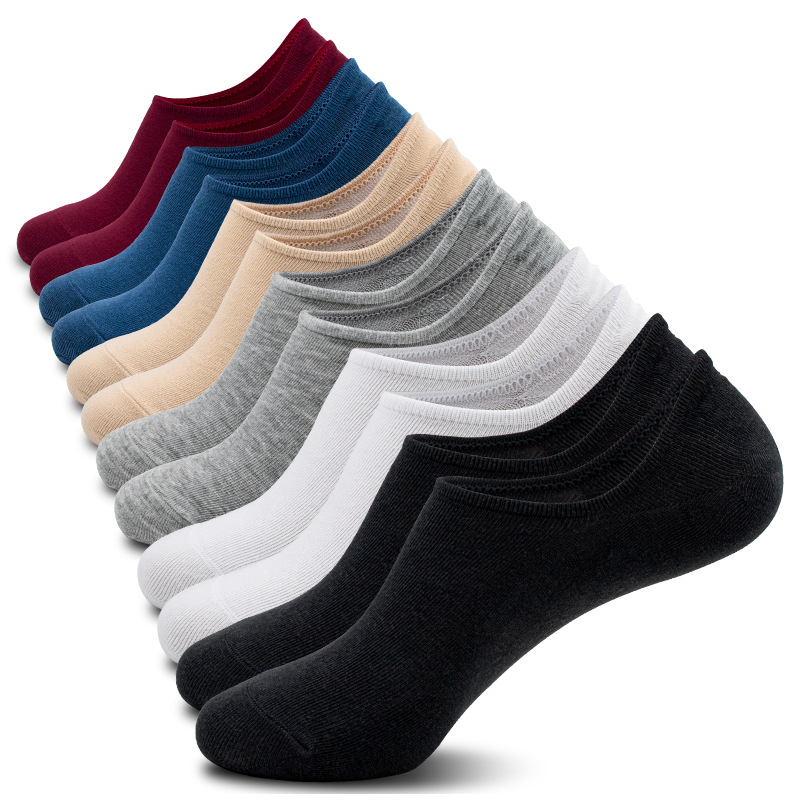

Choosing the right socks is crucial for comfort, foot health, and performance, especially when dealing with extreme temperatures. Whether it's the scorching heat of summer or the biting cold of winter, the material composition of women's socks can significantly affect how well they manage moisture, insulation, breathability, and durability.
This article explores the best materials for women’s socks tailored to hot and cold weather, helping you make an informed choice for every season.
The materials used in socks determine how well they:
Regulate temperature: Keep feet cool or warm
Manage moisture: Absorb sweat or wick it away
Prevent odors and infections: Through antimicrobial properties
Provide cushioning and support: For all-day comfort
Offer durability and stretch: For a proper fit and longevity
Seasonal conditions change these requirements drastically, so no single material is perfect for all weather.
When temperatures soar, the key is to keep feet cool, dry, and comfortable.
Pros: Soft, breathable, hypoallergenic
Cons: Absorbs moisture but dries slowly; can become soggy
Best Use: Lightweight cotton blends mixed with synthetic fibers improve moisture management and durability.
Pros: Naturally breathable, moisture-wicking, antimicrobial, eco-friendly
Cons: Less durable if pure bamboo; often blended with polyester or spandex
Best Use: Summer socks or casual wear, especially for sensitive skin.
Pros: Breathable, excellent moisture control, naturally odor-resistant
Cons: Can be more expensive; lightweight variants needed for hot weather
Best Use: Outdoor activities like hiking where temperature fluctuates.
Pros: Excellent moisture-wicking, fast drying, durable
Cons: Less breathable than natural fibers if used alone, can cause odor without treatments
Best Use: Sports socks, high-performance activities.
Engineered polyester blends designed to pull moisture away quickly and keep skin dry.

In winter, the goal is to trap heat, insulate, and keep feet dry.
Pros: Exceptional thermal insulation, moisture-wicking, soft (no itch), naturally odor-resistant
Cons: Higher price point
Best Use: Hiking, skiing, daily winter wear.
Pros: Warmer than sheep wool, lightweight, hypoallergenic, moisture resistant
Cons: Less elastic; typically blended
Best Use: Luxury or high-end cold-weather socks.
Pros: Very soft, warm, comfortable
Cons: Expensive, less durable, usually blended
Best Use: Fashion socks or indoor cold-weather wear.
Pros: Lightweight, durable, excellent heat retention
Cons: Less breathable than wool, may trap moisture if not designed well
Best Use: Active winter sports or extreme cold.
Combine warmth, moisture management, elasticity, and durability.
| Feature | Hot Weather Socks | Cold Weather Socks |
| Breathability | High (bamboo, cotton blends) | Moderate (merino wool blends) |
| Moisture Wicking | Essential (synthetics, bamboo) | Important but less than hot weather |
| Insulation | Minimal | High (wool, alpaca) |
| Odor Resistance | Natural antimicrobial fibers preferred | Wool excels naturally |
| Cushioning | Light to moderate | Moderate to heavy |
| Durability | Moderate | High |
Hot weather socks should be thin to medium thickness to allow airflow.
Cold weather socks are often thicker with cushioning to trap warmth.
Seamless or flat seam socks reduce friction and blisters, important for both seasons.
Compression socks improve circulation—especially in colder weather to reduce cold feet.
Proper washing preserves fiber qualities; wool socks often need gentle washing.
| Activity | Recommended Material | Weather |
| Running | Synthetic blends, bamboo | Hot |
| Hiking | Merino wool, wool blends | Cold/Variable |
| Office Wear | Cotton blends, thin wool | Year-round |
| Casual Summer Wear | Bamboo, cotton | Hot |
| Winter Sports | Merino wool, Thinsulate | Cold |
The best materials for women’s socks depend heavily on the weather and activity:
For hot weather, look for breathable, moisture-wicking materials like bamboo blends, lightweight merino wool, and synthetics engineered for sweat control.
For cold weather, prioritize insulating, moisture-managing fibers such as medium to heavyweight merino wool, alpaca, or synthetics designed for thermal retention.
Investing in the right sock materials enhances foot comfort, hygiene, and performance, making every step enjoyable regardless of the season.